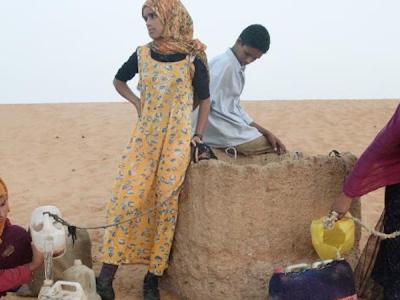Algeria is the tenth largest country in the world and the third largest in Africa. It extends over and area beyond 240 million hectares in Northern Africa, of which 90% occurs in the Sahara arid zone (less than 200 mm annual rainfall). With a coastline of 1,200 km, its twin Atlas mountain chains with peaks between 1,000 and 1,800 m separating the northern areas from the rest of the country, its arid and semi-arid high plateaus with immense salinas and Saharan plains, Algeria offers a rich mosaic of ecosystems and biodiversity.
Source: GEF Project Details (25 February 1997). Revised Project Proposal: Algeria - National Biodiversity Strategy, Action Plan and Report to the CBD.
There are also a number of adaptation projects in Algeria that are listed on the International Development Research Centre's website. For more information: Projects in Algeria
The Coastal Region of Algeria along the southern Mediterranean provides a substantial portion of food and livelihood for the coastal communities through current fisheries, practices primarily with archaic techniques. The Arid and Semi-arid Region consists of steppe areas extending over 36 million hectares (i.e. one third of the total national territory). These areas provide support for animal herds, estimated at over 12 million heads, and for a human population of nearly 7 million. Unfortunately, overgrazing, deforestation, illegal hunting in addition to the harsh environment in these areas pose a threat to the existence of several wild life species.
Source: GEF Project Details (25 February 1997). Revised Project Proposal: Algeria - National Biodiversity Strategy, Action Plan and Report to the CBD.


